Best Raspberry Pi Accessories of 2025
Accessories to make the most of your Raspberry Pi
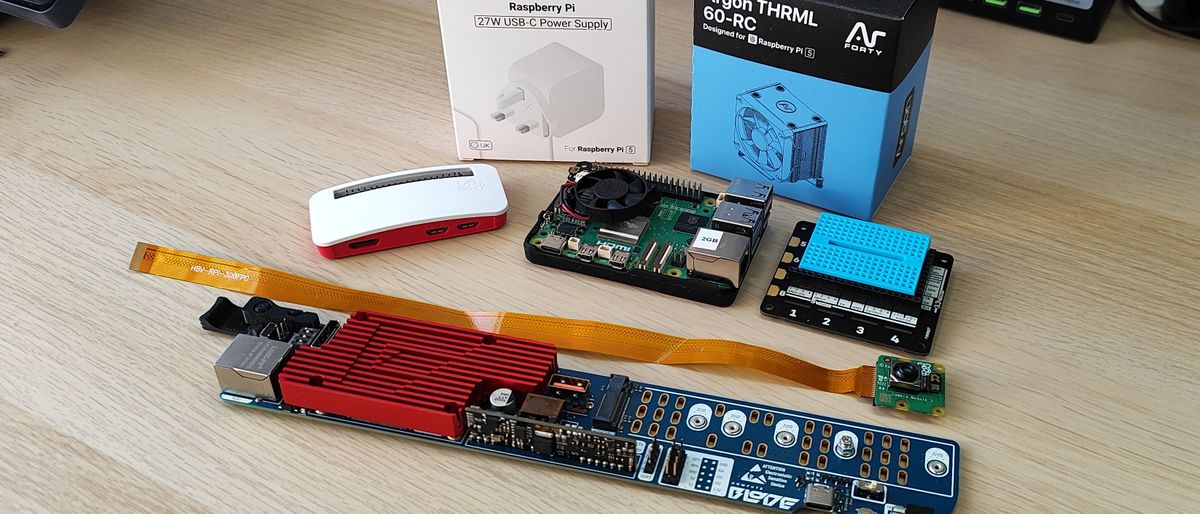
The Raspberry Pi 5, released at the end of October 2023 is now the flagship Raspberry Pi with much more power than the older Raspberry Pi 4. Raspberry Pi 5 stock levels are generally in good health. You now have a better chance of securing multiple Raspberry Pi 4 and the new Raspberry Pi 5 for MSRP. Once your have your Raspberry Pi, you'll need a few extra products to make the most of it. There's a whole world of accessories that help you make the most of the Raspberry Pi's GPIO. There are accessories which have been around since the Raspberry Pi was released, when it had just 26 GPIO pins (but don't worry as many of them will still work with newer models). Every week it seems that there are new accessories for our favorite single board computer. Using special add-on boards (HATs) we can take advantage of the Raspberry Pi's now standard 40 pin GPIO to control and interact with electronic components and create diverse projects such as robotics, machine learning and IoT and even our own home server.
The recent Raspberry Pi 5 release will undoubtedly see a slew of new accessories and add-ons for our favorite Single Board Computer. Right now we have a plethora of cases and coolers for the Raspberry Pi 5 under review. Some, like Argon's THRML 60-RC, ONE V3 M.2 and the THRML Active Cooler are ready for you to read, others are still a work in progress.
When searching for accessories for your Raspberry Pi 5, you really need to make sure that they are compatible. The GPIO may look the same, but some HATs no longer work and require a software workaround in order to be used. Confirm that the software for your chosen board will work before opening your wallet.
As with any computer, you’ll need a way to enter data and a way to see the interface, which usually means getting a keyboard, a mouse and a monitor. However, you can opt for a headless Raspberry Pi install, which allows you to remote control the Pi from your PC. In that case, the minimum requirements are:
- microSD card of at least 16GB, but the best Raspberry Pi microSD cards have 32GB or more. When you first set up a Raspberry Pi, you need to “burn” the OS onto it by using a PC, another Raspberry Pi or even a phone with microSD card reader.
- Power supply: For the Raspberry Pi 5, you need a 5 Amps, 5 Volts power supply. We recommend the official 27W power supply, as it gives you all of the power that your Pi 5 and accessories will need. For the Raspberry Pi 4, you need a USB-C power source that provides at least 3 Amps / 5 Volts, but for other Raspberry Pis, you need a micro USB connection that offers at least 2.5 Amps and the same 5 Volts. Your power supply provides power to both the Pi and any attached HATs and USB devices, so always look for supplies that can provide a higher amperage at 5 Volts as this will give you a little headroom to safely power your projects.
In addition, there are a number of accessory and add-on types that protect your Pi, add new features and make everything a lot more useful and fun. These include:
- Cases: The best Raspberry Pi cases give you style, functionality and durability.
- HATs (aka add-on boards): The best Raspberry Pi HATs let you do everything from adding motors to creating LED light shows.
- Breakout Boards: To breakout the GPIO for easier access or to use via a breadboard. Essential for the new Raspberry Pi 400.
- Camera Modules: The Raspberry Pi has its own special camera port and there's a whole ecosystem of compatible camera modules for it.
- Cooling: Raspberry Pi 4 models in particular can get hot so fans and heatsinks help.
- Electronic parts: You can make great projects and have a lot of fun with motors, sensors, transistors and other bits and bobs. Just don't forget your breadboard!
- USB Drives: The Raspberry Pi 4 can boot from a USB hard drive / SSD giving us a speed boost, and a cheap means to add additional storage.
Overall, these are the best Raspberry Pi accessories that we have tested. No matter what your needs or project, you’ll definitely need some of these.
The Best Raspberry Pi Accessories You Can Buy Today
Why you can trust Tom's Hardware
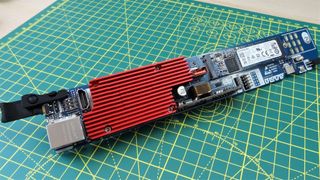
1. Compute Blade
Our expert review:
Reasons to buy
Reasons to avoid
This is much more than just a mere carrier board. Designed to be a “server on a stick” the Compute Blade is made for blade server configurations and sees the Compute Module 4 cooled and protected by a snazzy red anodized aluminum cooler. We’ve got space for a range of M.2 NVMe storage options, onboard TPM, Gigabit Ethernet and power can be provided via USB C or by Power over Ethernet. The Compute Blade is the best carrier board for your Compute Module 4.
Read: Compute Blade Review
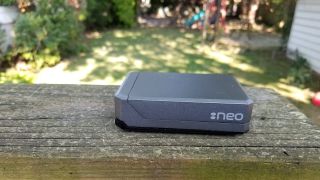
2. Argon Neo Case
Our expert review:
Reasons to buy
Reasons to avoid
With an attractive aluminum design the Argon Neo is the classy way to cool your Raspberry Pi 4. The passively-cooled case follows the Argon design language (they all look like sci-fi props) with a space-gray finish and sharp lines. Under the sliding, magnetic cover we have access to the GPIO. We can attach jumper wires or HATs to the GPIO, but with the latter we would add a header riser to ensure that our HAT clears the case. This case is a solid choice for cooling, protection and all-important GPIO access.
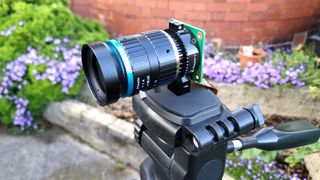
3. Raspberry Pi High Quality Camera
Our expert review:
Reasons to buy
Reasons to avoid
The Raspberry Pi High Quality Camera is a flexible photographic platform for novices and pro-photographers. We get great image quality thanks to a 12.3 megapixel Sony IMX477R sensor but the star of the show are the interchangeable lenses. With the HQ camera we can purchase official and third-party lenses which provide telephoto, macro.
Read: Raspberry Pi High Quality Camera review
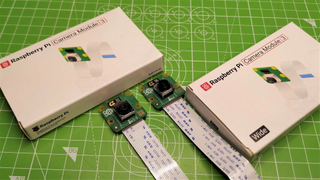
Reasons to buy
Reasons to avoid
The Raspberry Pi Camera Module v3 brought auto-focus to the official camera range and it did a great job. It works with all models of Raspberry Pi and can be controlled using Python and a terminal based tool. Auto-focusing is fast and image quality is great. It comes in two versions. The standard angle lens and a wide-angle lens which opens up our shots, but remember that close-up objects will have a little distortion.
Read: Raspberry Pi Camera Module v3 Review
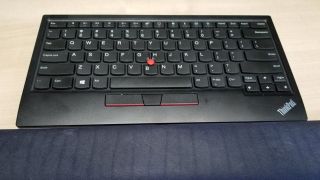
5. Lenovo ThinkPad TrackPoint Keyboard II
Our expert review:
Reasons to buy
Reasons to avoid
Working via a dedicated dongle or Bluetooth, this is the best-in-class typing experience for your Raspberry Pi. The keyboard is solid and has plenty of space to help us work. The integrated trackpoint may not be for everyone, but it gets the job done.
Read: Lenovo ThinkPad TrackPoint Keyboard II review
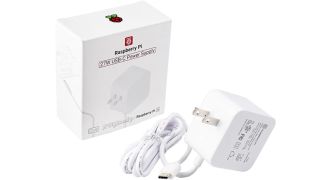
6. Raspberry Pi 5 Official Power Supply
Reasons to buy
Reasons to avoid
The new Raspberry Pi 5 official power supply is built to power your Raspberry Pi 5 and any future add-ons (including the new M.2 SSD HAT). To this end it can provide up to 27W of power and at 5.1V it can supply 5A, not that the Raspberry Pi 5 needs that much power. The power supply can also be used to charge your Steam Deck, cellphones, and many other devices thanks to PD compatibility. A great all-round power supply.
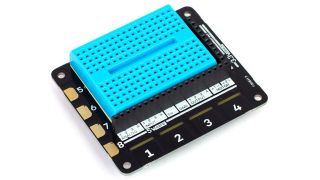
7. Pimoroni Explorer HAT Pro
Our expert review:
Reasons to buy
Reasons to avoid
We’ve used this HAT to teach educators and children how to code and it works beautifully. Providing us with a safe and easy to use interface for the GPIO, we can build a plethora of projects. With eight capacitive touch inputs (four can be used with croc-clips), analog inputs and a motor controller we can build fun projects directly on the included breadboard. This is an old board (eight years now) but you will get so much out of it.
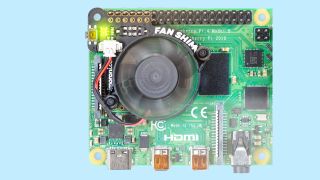
8. Pimoroni Fan Shim
Our expert review:
Reasons to buy
Reasons to avoid
You might be asking “why is the new Active Cooler not taking this spot?”, simple answer is that Fan Shim works on every model of Raspberry Pi. No config is needed, and you can also use the GPIO. Drop it on the GPIO and the tiny fan quietly keeps your Raspberry Pi cool, even the Raspberry Pi 5! This is a cheap and cheerful way to keep your Pi cool.
Read: Pimoroni Heatsink and Fan Shim Tested

9. Silicon Power 32GB 3D NAND microSD Card
Our expert review:
Reasons to buy
Reasons to avoid
MicroSD has been the go-to storage option for Raspberry Pi since the B+ in 2014. They are cheap and plentiful, but sometimes their performance can be lacking. This card from Silicon Power is lower cost and has leading performance. With the new Raspberry Pi 5 you will likely see increased performance so your purchase will keep you working fast.
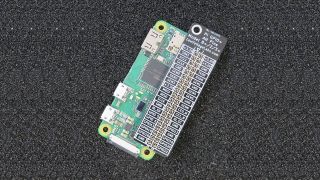
10. GPIO Reference Board
Reasons to buy
Reasons to avoid
Unless you have memorized the GPIO pinout you’ll need a reference. Using pinout.xyz is a great idea, but an offline option is better. These boards fit over the GPIO and provide a pin reference for all models of Raspberry Pi. They work well in the classroom and in your makerspace.
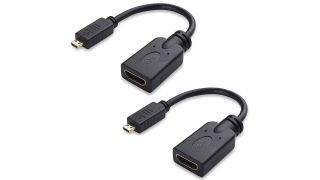
11. micro HDMI to HDMI Adapters
Reasons to buy
Reasons to avoid
The Raspberry Pi 4 introduced micro HDMI ports to the board, and the Raspberry Pi 5 continues this choice. But what about all those full size HDMI leads that we have laying around? These adapters mean we can reuse our old HDMI cables with our newer Raspberry Pi.
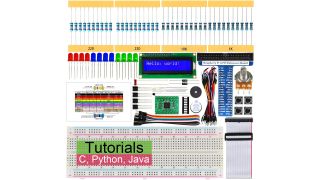
12. Electronics Kit with Breadboard, Wires
Reasons to buy
Reasons to avoid
Getting started with electronics isn’t easy. There is a lot to learn and it can seem daunting. What you need is a good kit and clear instructions.This kit comes with all the basic inputs / outputs along with a breadboard to build your projects. Online tutorials in C, Python and Java mean that you are guided through the learning process.
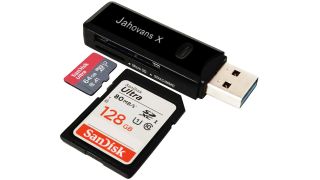
13. USB 3 microSD Card Reader
Reasons to buy
Reasons to avoid
Writing micro SD card images for any model of Raspberry Pi requires another computer and not every computer has a micro SD card reader. These cheap USB 3 card readers work with micro and full size SD cards and are compatible with Raspberry Pi Imager, Balena Etecher and Rufus.
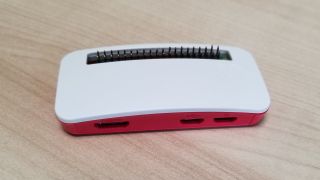
14. Raspberry Pi Zero Official Case
Our expert review:
Reasons to buy
Reasons to avoid
We're not huge fans of the Official Raspberry Pi 4 case, because it covers the GPIO pins and camera slots. However, the Official Raspberry Pi Zero case is a completely different as it comes with three different covers: one which has a camera hole (so you can make a Raspberry Pi body camera), another which exposes the GPIO pins and a third which covers the whole thing. The official Raspberry Pi Zero case also has the official burgundy and white colors of the Raspberry Pi Foundation.
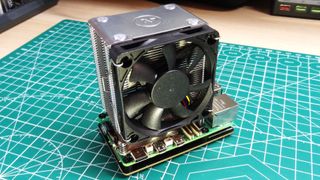
15. Argon THRML 60-RC for Raspberry Pi 5
Our expert review:
Reasons to buy
Reasons to avoid
The Raspberry Pi 5 needs cooling if you want to get the best from it. Argon Forty has released a plethora of Pi 5 cooling peripherals, and this $20 cooler looks more at home on Dominic Toretto's Dodge Charger than cooling the latest Raspberry Pi flagship.
The cooler is a mix of copper heat pipes, aluminum heatsink and a potent 60mm fan. The size is a downside, accessing the camera / display connections is awkward, as is GPIO access. There will be no direct HAT connections, you will need a breakout board.
The cooling performance is immense. We struggled to get the Raspberry Pi 5 up to a temperature that would trigger the fan. Yes, the passive cooling is good enough on its own. We did manage to trigger the fan and even overclocked to 3 GHz, the CPU only hit 36.7 degrees Celsius!
Great value cooler for your Raspberry Pi 5.
Read: Argon THRML 60-RC Review
Finding Discounts on the Best Raspberry Pi Accessories
Whether you're shopping for one of the best Raspberry Pi accessories or one that didn't quite make our list, you may find savings by checking out the latest SparkFun promo codes, Newegg promo codes, Amazon promo codes or Micro Center coupons.
Stay On the Cutting Edge: Get the Tom's Hardware Newsletter
Get Tom's Hardware's best news and in-depth reviews, straight to your inbox.
-
zintoki Just got Argon One. It's really beautifull case but can't cool RPI4B @2ghz for 20mins on full load. Cheapest Chinese case with heatsinks and fan all for 4USD have much better performance.Reply -
CooliPi Strange. See https://magpi.raspberrypi.org/articles/group-test-best-raspberry-pi-4-thermal-cases-tested-and-rankedIt should have enough power to cool it, albeit with the help of a fan. Does it have proper thermal contact?Reply
If you need more performance... well.. look at the only other case that beat it in that review.
There's some other comparison over here:
https://github.com/nschloe/stressberrybut be warned, it doesn't record ambient temperatures, which adds an offset. Hard to compare exactly.
And if you are after some extreme cooling, see this
RbzKM5XxlOAView: https://youtu.be/RbzKM5XxlOA
Have fun ;)
Just FYI, I have my RPI4 4GB (or a second one with 8GB) OC'ed to 2100MHz, over_voltage=6, core at 550MHz. Typical temperature deltas:
Idle - 10°C
Firefox running - 14°C
Max load (stress-ng or linpack) - 22°C
All passive, not with that 60mm Noctua fan. It slashes it even more.
